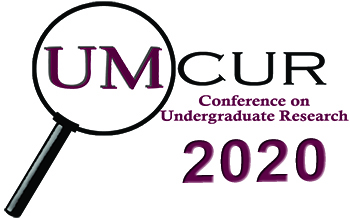Project Type
Poster
Faculty Mentor’s Full Name
Scott Miller
Faculty Mentor’s Department
Division of Biological Sciences
Abstract / Artist's Statement
The evolution of the mitochondrion from an endosymbiotic bacterium was the defining moment in the origin of eukaryotes. This understanding is based on multiple evolutionary studies that show that some organelles, such as mitochondria and chloroplasts, evolved from endosymbionts. Yet, understanding the process of organelle evolution remains one of the grand challenges in biology. Although several host-microbe relationships have been studied as key steps in organelle evolution, these examples typically focus on later stages of this process. The diatoms in the genera Rhopalodia, Epithemia, and Denticula have nitrogen fixing cyanobacterial endosymbionts called spheroid bodies, which are proposed to be emerging organelles. Understanding this diatom-spheroid body relationship provides an important model of that can provide insight into the early stages of how organelles evolve.
To understand this system, we obtained genome data for the spheroid body as well as the first genome data for the host, Rhopalodia gibba. We are using these data to investigate evolutionary changes in spheroid body and host genomes during the development of the symbiosis as well as to serve as references for mapping gene expression data. In this study, we compared the genome of the R. gibba organelles to other closely related diatom species that don’t have spheroid bodies. Analyses show that the chloroplast genome is changing at a similar rate compared to related diatoms. However, selection on the R. gibba mitochondrion appears to be relaxed. Translational genes appear to be changing at an increased rate compared to energy production genes. Additionally, horizontal gene transfer also contributes to mitochondrial divergence. This diatom-spheroid body relationship provides a rare opportunity to quantify these benefits and costs and could help elucidate the mechanisms of organelle evolution.
Category
Life Sciences
Rapid Evolution of the Rhopalodia gibba Mitochondrion in the Presence of an Emerging Nitrogen Fixing Organelle
The evolution of the mitochondrion from an endosymbiotic bacterium was the defining moment in the origin of eukaryotes. This understanding is based on multiple evolutionary studies that show that some organelles, such as mitochondria and chloroplasts, evolved from endosymbionts. Yet, understanding the process of organelle evolution remains one of the grand challenges in biology. Although several host-microbe relationships have been studied as key steps in organelle evolution, these examples typically focus on later stages of this process. The diatoms in the genera Rhopalodia, Epithemia, and Denticula have nitrogen fixing cyanobacterial endosymbionts called spheroid bodies, which are proposed to be emerging organelles. Understanding this diatom-spheroid body relationship provides an important model of that can provide insight into the early stages of how organelles evolve.
To understand this system, we obtained genome data for the spheroid body as well as the first genome data for the host, Rhopalodia gibba. We are using these data to investigate evolutionary changes in spheroid body and host genomes during the development of the symbiosis as well as to serve as references for mapping gene expression data. In this study, we compared the genome of the R. gibba organelles to other closely related diatom species that don’t have spheroid bodies. Analyses show that the chloroplast genome is changing at a similar rate compared to related diatoms. However, selection on the R. gibba mitochondrion appears to be relaxed. Translational genes appear to be changing at an increased rate compared to energy production genes. Additionally, horizontal gene transfer also contributes to mitochondrial divergence. This diatom-spheroid body relationship provides a rare opportunity to quantify these benefits and costs and could help elucidate the mechanisms of organelle evolution.
